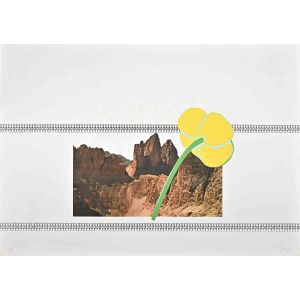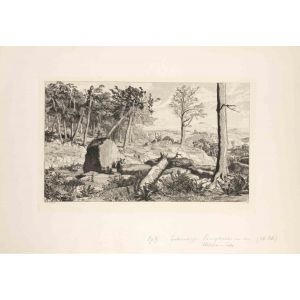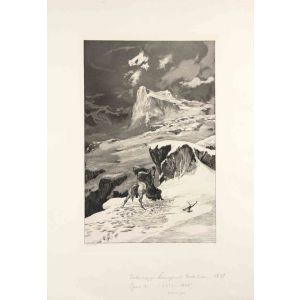La Fuite
La Fuite is an original print in ething technique on ivory paper, realized by J.F. Millet ( French Painter, 1814-1875 ) and by Marcel Roux, a sculptor .
Good conditions: as good as new.
This etching realized by Millet and Roux shows the sculptor's signature on the bottom right and the painter's signature on the bottom left. The title of the work is shown on the lower center.
Image Container: 35 x 32 cm
La Fuite is an original print in ething technique on ivory paper, realized by J.F. Millet ( French Painter, 1814-1875 ) and by Marcel Roux, a sculptor .
Good conditions: as good as new.
This etching realized by Millet and Roux shows the sculptor's signature on the bottom right and the painter's signature on the bottom left. The title of the work is shown on the lower center.
Image Container: 35 x 32 cm
Jean-François Millet (1814 - 1875) was a French painter, considered one of the greatest exponents of Realism. From a stylistic point of view Millet was very sensitive to the realist offensive of Gustave Courbet, from whom he took inspiration in creating direct and unadorned paintings and painting subjects hitherto considered trivial and unworthy of pictorial representation (in this case the daily work of farmers).
Unlike other realist painters, however, Millet did not use his paintings as an instrument of social denunciation and, on the contrary, often filled them with intense lyrical and sentimental involvement: this was one of the aspects most criticized by other artists and critics, such as Cézanne, who compared Millet's paintings to an "old lacrimal gland". In spite of this, Millettian works are distinguished by the geometric essentiality of the forms, the regularity and harmony of the compositions, the meditated balance between lights and shadows and the balance between spots and shades of colors: these are all characteristics that reveal a classical setting, as well as a thoughtful reflection on Renaissance archetypes.
The human figures present a body modeled with energetic plasticity and have well-defined attitudes: on the contrary, the details of the painting are not analytically described, but are barely hinted at and fixed in their essentiality. Millet's paintings had a huge echo and many were affected by his influence: Pissarro, Seurat, Gauguin, Segantini, Knight and, above all, Van Gogh deserve special mention.



































Validate your login
Sign In
Create New Account